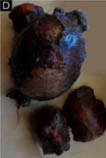Microcosmus squamiger Michaelsen, 1927
Scaly tunicate
Classification / Names Common names | Synonyms | CoL | ITIS | WoRMS
Ascidiacea | Stolidobranchia | Pyuridae
Environment: milieu / climate zone / depth range / distribution range Ecology
Sessile; depth range 10 - 10 m (Ref. 1733). Tropical; 42°N - 41°S, 3°E - 117°W
Distribution Countries | FAO areas | Ecosystems | Occurrences | Introductions
Cosmopolitan.
Length at first maturity / Size / Weight / Age
Maturity: Lm ? range ? - ? cm Max length : 5.0 cm COLD male/unsexed; (Ref. 2268)
Life cycle and mating behavior Maturity | Reproduction | Spawning | Eggs | Fecundity | Larvae
Main reference
References | Coordinator | Collaborators
Monniot, C. 2002 Stolidobranch ascidians from the tropical western Indian Ocean. Zooligical Journal of the Linnean 135:65-120. (Ref. 1733)
IUCN Red List Status
(Ref. 130435: Version 2025-1)
CITES status (Ref. 108899)
CMS (Ref. 116361)
Threat to humans
Human uses
| FishSource |
Tools
More information
Diet composition
Food consumption
Predators
Max. ages / sizes
Length-weight rel.
Length-length rel.
Length-frequencies
Mass conversion
Abundance
Internet sources
BHL | BOLD Systems | CISTI | DiscoverLife | FAO(Publication : search) | Fishipedia | GenBank (genome, nucleotide) | GloBI | Gomexsi | Google Books | Google Scholar | Google | PubMed | Tree of Life | Wikipedia (Go, Search) | Zoological Record



